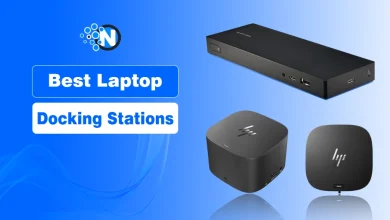Why Every Scalable Delivery Operation Needs a Multi-Route Planner

Delivery volumes continue to rise, and customer time windows have become much tighter. Keeping routes efficient under these conditions takes more than manual spreadsheets and basic tools; it demands a multi-route planner. A quick look at the freight landscape shows why.
Freight networks in the US now carry over 20 billion tons of goods worth $18.7 trillion, traveling more than 5.5 trillion ton-miles each year. At the same time, a growing number of billion-dollar weather events can shut roads and terminals without warning.
These disruptions reach fleets already handling promotional spikes, quick delivery promises, driver shortages, and varied local rules. As volumes increase, traditional routing methods quickly fall behind. In this blog, I will examine the key issues in scaling deliveries and explain how a multi-route planner converts complexity into reliable, profitable service.
Key Challenges in Scaling Deliveries
As deliveries scale, inefficiencies multiply. Weak links that were manageable at small volumes become major bottlenecks. Here are the top challenges modern fleets face:
- Demand volatility: Sudden order surges during sales or seasons can overwhelm static schedules.
- Shrinking delivery windows: Customers expect faster service, forcing precision and mid-route adaptability.
- Driver shortage: With wages climbing, inefficient routing directly eats into margins.
- Strict compliance rules: Hours-of-Service limits mean less flexibility for manual adjustments.
- Urban congestion & tolls: Longer stops and variable fees add complexity and cost.
- Local regulations: Varying toll systems, emission zones, and parking restrictions challenge consistency.
- Extreme weather: Hurricanes, floods, and wildfires now frequently disrupt transport corridors.
- Mixed-fleet management: Balancing diesel, EV, and hybrid assets requires tailored routing.
- Labor constraints: Unions and rest-break requirements introduce scheduling rigidity.
- Infrastructure bottlenecks: Ongoing construction and bridge limits create unpredictable detours.
- Distributed inventory: Multiple fulfillment points mean more pickups and cross-routing variables.
- Data silos: Separate systems for TMS, OMS, and telematics slow decision-making.
Each of these challenges can compound rapidly. A multi-route planner mitigates them through automation, analytics, and real-time adaptability.
Why a Multi-Route Planner Is Essential for Scaling Deliveries
As networks grow, manual planning cracks under pressure and hidden costs emerge. Dispatch rooms face order spikes, traffic incidents, and shrinking delivery windows. Without route management software, teams spend hours firefighting, risking errors that frustrate both customers and drivers.
- Handle Volume Surges: Continuous optimization absorbs late orders and peak-season spikes without manual replanning.
- Hit Shorter Delivery Windows: Dynamic checks keep every ETA inside its promise, cutting penalty fees and improving first-attempt success.
- Generate Routes in Minutes: Batch-run processes that once took hours are replaced by minutes-fast manifest generation, so late orders no longer derail operations.
- Adapt to Real-Time Disruptions: GPS pings, traffic alerts, and weather feeds trigger real-time re-sequencing that protects driver safety and service levels.
- Compliance-Driven Scheduling: Enforce driving-time and rest-break rules automatically, with no manual workarounds required.
- Maximized Driver Productivity: Schedule each tour to use every driver hour effectively, mitigating labor shortages and protecting margins.
- Slash Driving Miles and Labor Hours: Better stop sequencing cuts deadhead miles and overtime, lowering fuel and wage costs.
- Free Dispatcher Bandwidth: Automated routing returns hours to dispatchers, letting them focus on partner negotiations and continuous improvement.
- Improve Driver Satisfaction and Retention: Predictable, optimized tours reduce daily stress and turnover.
- Strengthen Customer Loyalty: Reliable windows elevate the customer experience and drive repeat purchases.
A multi-route planner shifts dispatchers from reactive crisis management to strategic optimization, strengthening both efficiency and morale.
Core Features of an Effective Multi-Route Planner
| Capability | What It Does | Business Impact |
|---|---|---|
| Advanced constraint engine | Models fleet limits, compliance rules, and customer SLAs | Keeps routes legal, efficient, and policy-aligned |
| Hybrid optimization engine | Uses precise algorithms and fast heuristics | Balances cost efficiency with agility |
| Service-time learning | Applies AI to past delivery data by ZIP code/time | Cuts excess buffers and idle time |
| Dynamic time-window compliance | Reorders stops automatically when delays occur | Protects on-time delivery metrics |
| Carrier orchestration | Compares internal vs. external fleet costs in real time | Minimizes outsourcing expenses |
| User-friendly interface | Offers map views, alerts, and drag-and-drop tools | Accelerates adoption and daily efficiency |
Best Practices and Continuous Improvement
A successful multi-route planner rollout is phased, data-driven, and continuously optimized.
- Cleanse and enrich data: Validate addresses, update rosters, and calibrate models using live logs.
- Start small: Run a pilot with 20–50 vehicles to prove value.
- Train teams: Turn dispatchers into “exception managers.”
- Measure performance: Track KPIs like on-time-in-full rate, route time, and cost per stop.
- Review and refine: Use analytics to tweak configurations monthly.
- Scale smartly: Expand only after exceeding baseline KPIs.
This structured rollout reduces risks, delivers ROI quickly, and builds executive confidence.
The Future of Multi-Route Planning with AI
AI-driven route optimization is swiftly progressing into a self-learning ecosystem that can:
- Simulate detour strategies before storms or traffic spikes.
- Predict congestion and adjust pricing to flatten delivery peaks.
- Coordinate EV fleets with real-time charger availability.
- Enable voice-driven management to allow dispatchers to act hands-free.
The next generation of multi-route planners will not just optimize routes, they’ll self-optimize networks, anticipating demand and disruptions before they occur.
Final Thoughts
Scaling delivery operations means confronting a growing list of challenges, from demand volatility and shrinking time windows to driver shortages, regulatory complexity, and fragmented data.
Traditional routes and manual spreadsheets cannot keep up, and a multi-route planner automates and helps with changing times. Fleets that move to intelligent routing quickly lower cost per mile, shrink carbon footprints, and unlock capacity for growth.
To get started, audit your current routing gaps, define clear KPIs, and launch a focused pilot with a proven partner. Software from technology partners like FarEye lets teams phase in predictive tools, automate feedback loops, and record measurable savings in their very first lanes.




